Are you looking to elevate your miso soup game?
Look no further!
I’ve got the scoop on the best noodles to add that extra oomph to your bowl.
Ramen, udon, soba, rice, or shirataki – I’ll guide you through the options so you can find your perfect match.
Whether you prefer chewy or silky, thick or thin, these noodles will take your miso soup experience to new heights.
Get ready to slurp and savor every delicious bite!
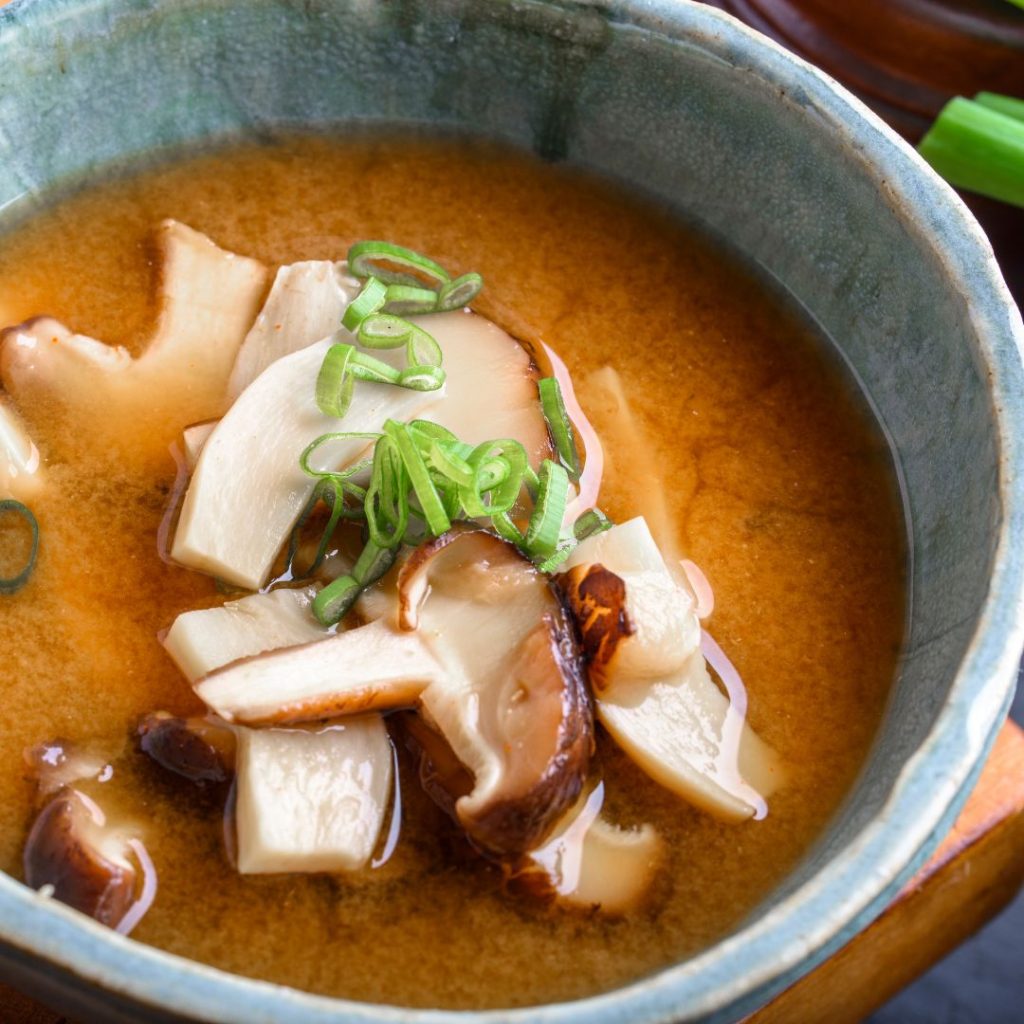
Key Takeaways
- Ramen noodles and udon noodles are both excellent choices for miso soup, as they offer a range of textures and flavors.
- Both noodles can be cooked until tender and chewy, adding depth of flavor and heartiness to the dish.
- Udon noodles are low in fat and a good source of carbohydrates, while soba noodles provide health benefits such as fiber, protein, and essential minerals.
- Rice noodles, on the other hand, are gluten-free, low in calories, and high in nutrients without excess fat or cholesterol. Shirataki noodles are a great option for low-carb or calorie-restricted diets.

Ramen Noodles
If you’re looking for the best noodles to use in your miso soup, ramen noodles are a great choice.
Ramen noodle varieties offer a wide range of textures and flavors that can elevate your soup experience to new heights.
From thin and delicate to thick and chewy, there’s a ramen noodle variety for every palate.
These noodles are made with wheat flour, water, and kansui (a type of alkaline mineral water), giving them their distinctive yellow color and springy texture.
Preparing Ramen Noodles
When it comes to preparing ramen noodles for miso soup, there are different ways you can go about it.
You can simply cook the noodles according to the package instructions until they reach your desired doneness, then add them directly to your hot miso broth.
This method ensures that the noodles stay firm and retain their chewiness.
Alternatively, you can also pre-cook the ramen noodles separately and rinse them under cold water before adding them to your miso soup.
This method helps remove excess starch from the noodles and prevents them from becoming too soft or mushy in the hot broth.
No matter how you choose to prepare your ramen noodles for miso soup, one thing is certain – they will add depth of flavor and heartiness to each spoonful of this comforting dish.

Udon Noodles
To enhance your udon experience in miso soup, make sure you cook it until it’s tender and chewy.
Udon noodles are thick and wheat-based, giving them a satisfyingly chewy texture that holds up well in soups.
When preparing udon for miso soup, follow these steps:
- Boil the noodles in salted water until they reach the desired tenderness.
- Drain and rinse under cold water to remove excess starch.
- Add the cooked udon to your hot miso soup just before serving.
Customizing Udon Noodles
Udon noodle recipes offer endless possibilities for customization.
You can add vegetables, tofu, or meat to create a hearty and nutritious meal.
Health Benefits of Udon Noodles
In terms of health benefits, udon noodles are low in fat and cholesterol-free.
They provide a good source of carbohydrates for energy and contain essential minerals like iron and calcium.
Incorporating udon into your diet can promote overall well-being while adding delightful flavors to your miso soup.

Soba Noodles
When cooking soba noodles, make sure you boil them until they are al dente for the best texture.
Soba noodles are a type of Japanese noodle made from buckwheat flour and wheat flour.
They have a nutty flavor and a firm yet chewy texture that pairs well with various sauces and toppings.
Health Benefits of Soba Noodles
These noodles are not only delicious but also offer several health benefits.
They are low in fat and calories, making them a great choice for those looking to maintain or lose weight.
Soba noodles also contain significant amounts of fiber, protein, and essential minerals like magnesium and manganese.
Cooking Soba Noodles
To cook soba noodles perfectly, follow these simple steps: 1) Bring a pot of water to boil; 2) Add the soba noodles and cook for about 5-7 minutes or until al dente; 3) Drain the noodles and rinse them under cold water to remove excess starch; 4) Serve immediately or use in your favorite recipes.
| Cooking Techniques | Health Benefits | Flavor Pairings |
|---|---|---|
| Boiling | Low in fat | Miso soup |
| Stir-frying | High in fiber | Tempura |
| Cold dipping | Good source of protein | Sesame sauce |
Serving others is always rewarding, especially when it comes to preparing delicious meals.
So go ahead, try cooking soba noodles using these techniques, reap their health benefits, and enjoy serving others with this delightful dish!
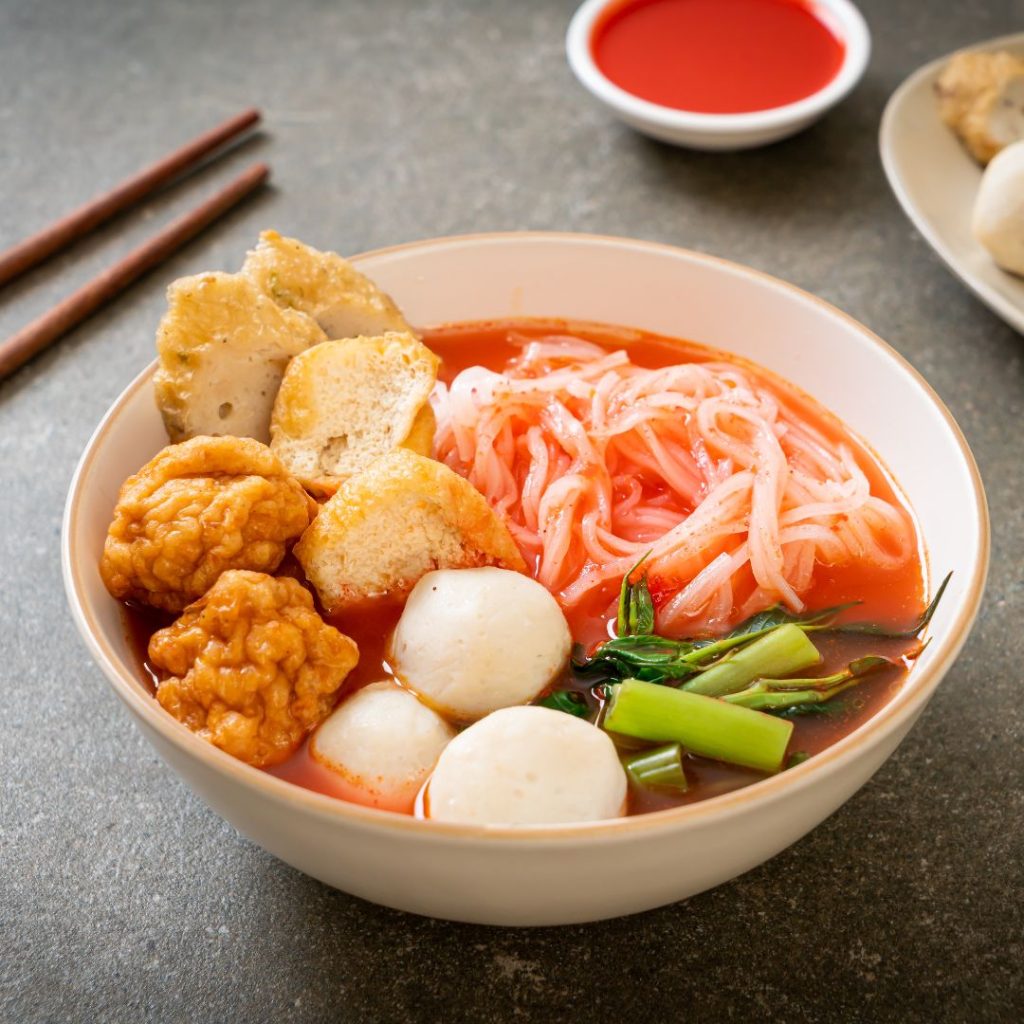
Rice Noodles
For a tasty and versatile alternative to soba noodles, consider trying rice noodles in your next dish.
Rice noodles have a delicate texture that absorbs flavors well, making them perfect for miso soup.
Here are some cooking techniques for rice noodles:
- Boiling: Bring a pot of water to a boil and cook the rice noodles according to package instructions. Drain and rinse with cold water to stop the cooking process.
- Stir-frying: Heat a wok or skillet over high heat and add some oil. Toss in the rice noodles along with your favorite vegetables, protein, and sauce. Cook until heated through.
- Steaming: Place the rice noodles in a steamer basket and steam for about 5 minutes until tender yet slightly chewy.
Using rice noodles in miso soup also provides several health benefits:
- Gluten-free: Rice noodles are naturally gluten-free, making them suitable for individuals with gluten sensitivities or celiac disease.
- Low in calories: Compared to other types of pasta, rice noodles are lower in calories, making them a healthier option for those watching their calorie intake.
- High in nutrients: Rice noodles provide essential nutrients like carbohydrates, fiber, and some minerals without adding excess fat or cholesterol to your meal.
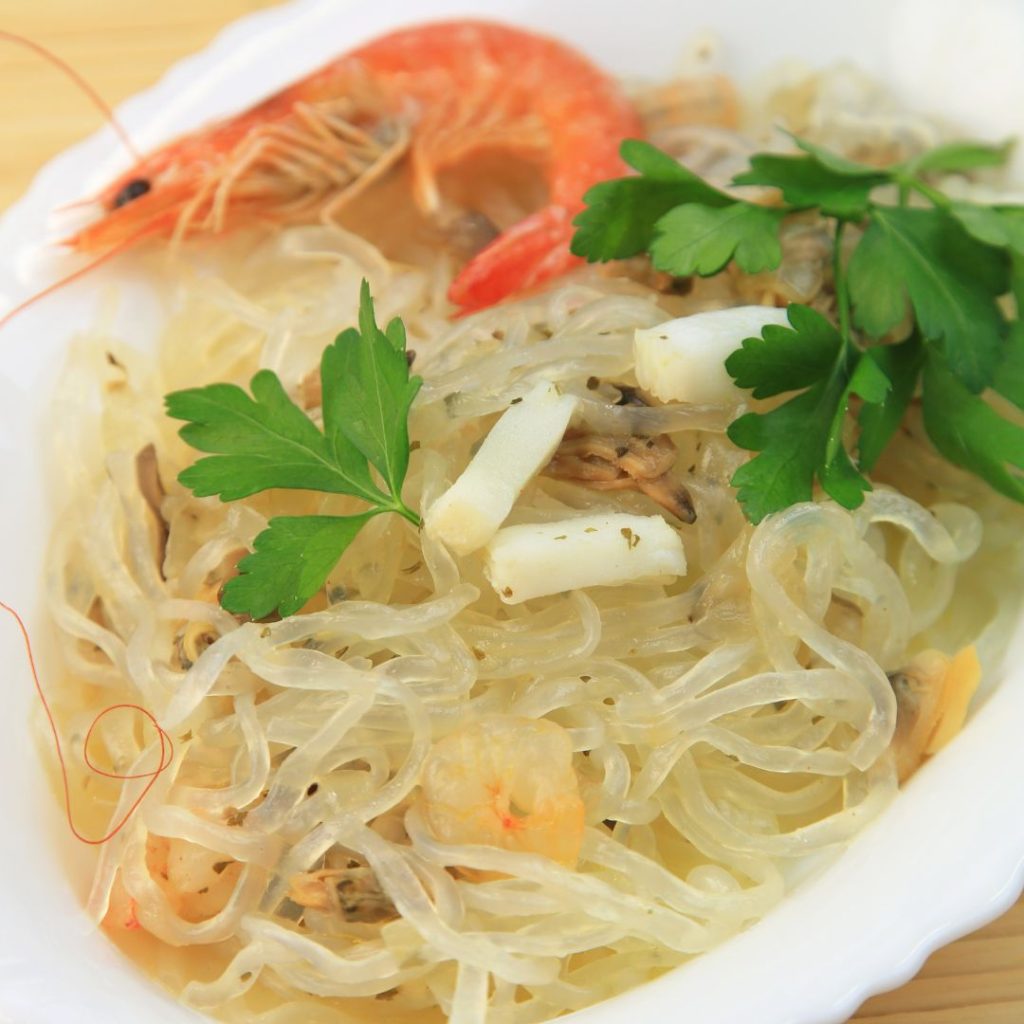
Shirataki Noodles
Have you ever tried adding shirataki noodles to your favorite stir-fry recipe?
These low carb options are a great alternative to traditional wheat-based noodles and offer numerous health benefits.
Shirataki noodles are made from the konjac plant, which is rich in fiber and low in calories.
They have a unique texture that is slightly chewy and absorbent, making them perfect for soaking up flavorful sauces in your stir-fries.



Konnichiwa! (Hello!) I'm Pat Tokuyama, a Japanese tofu cookbook author, who travels for music, food, and adventure. If you like Japanese tea, checkout some of the newestorganic japanese tea, matcha bowls and noren and more!
** Curious about the Plant Based Japanese Cooking Club? ** Learn more here!
Nutritional Value of Shirataki Noodles
Here’s a table to help you understand the nutritional value of shirataki noodles:
| Nutrient | Amount per 100g |
|---|---|
| Calories | 10 |
| Carbohydrates | 2g |
| Fiber | 2g |
As you can see, shirataki noodles are incredibly low in calories and carbs, making them an excellent choice for those on a low-carb or calorie-restricted diet.
Additionally, their high fiber content helps promote feelings of fullness and aids in digestion.
So why not give shirataki noodles a try in your next stir-fry?
They’re delicious, healthy, and sure to satisfy your noodle cravings!
Top Pick Brands for Best Noodles for Miso Soup
Primary Rating:
4.7 | Primary Rating:
4.5 | Primary Rating:
4.6 | Primary Rating:
4.6 | Primary Rating:
4.1 |
Pros:
| Pros:
| Pros:
| Pros:
| Pros:
|
Cons:
| Cons:
| Cons:
| Cons:
| Cons:
|
$3.39 ($0.36 / Fl Oz) | $4.18 ($0.30 / Ounce) | $22.85
| ||
- Offers an authentic Japanese ramen taste
- Shelf-stable and quick to prepare
- Suitable for various Asian dishes
- May not match the chewiness of fresh noodles
- Made from organic wheat, free from synthetic pesticides
- Offers traditional Japanese udon flavor and chewy texture.
- Pre-packaged for quick cooking, ideal for fast meals.
- Typically more expensive than non-organic udon noodles.
- Fewer flavor options compared to some brands.
- Offers a genuine nutty and earthy Japanese soba taste.
- Naturally gluten-free for those with sensitivities.
- Dried for long shelf life and quick cooking.
- Suitable for various dishes, including miso soup.
- Slightly different texture than fresh soba noodles.
- Prone to breaking if not handled carefully.
- Non-resealable packaging may require alternative storage.
- Suitable for those with gluten sensitivities.
- Use in soups, salads, and spring rolls.
- Offers a chewy texture that complements recipes.
- Delicate and can break if not handled carefully.
- Ideal for calorie-conscious and weight management.
- Gluten-Free
- Vegan-Friendly
- Fits low-carb and ketogenic diets.
- Different from regular pasta; some find it slimy or rubbery.
- Initial earthy or fishy smell that fades after rinsing.
- Digestive Sensitivity
Conclusion
So there you have it, the best noodles for miso soup.
Ramen noodles are a classic choice, with their chewy texture and ability to soak up the flavors of the miso broth.
Udon noodles offer a thicker and heartier option, perfect for those who prefer a more substantial noodle in their soup.
Soba noodles bring a nutty flavor and delicate texture to the bowl, adding an extra layer of complexity.
Rice noodles provide a lighter alternative, while still offering a satisfying bite.
And for those looking for a low-carb option, Shirataki noodles are a great choice.
Ultimately, the best noodle for miso soup depends on your personal preference and dietary needs.
So go ahead and experiment with different types of noodles to find your perfect bowl of miso soup!


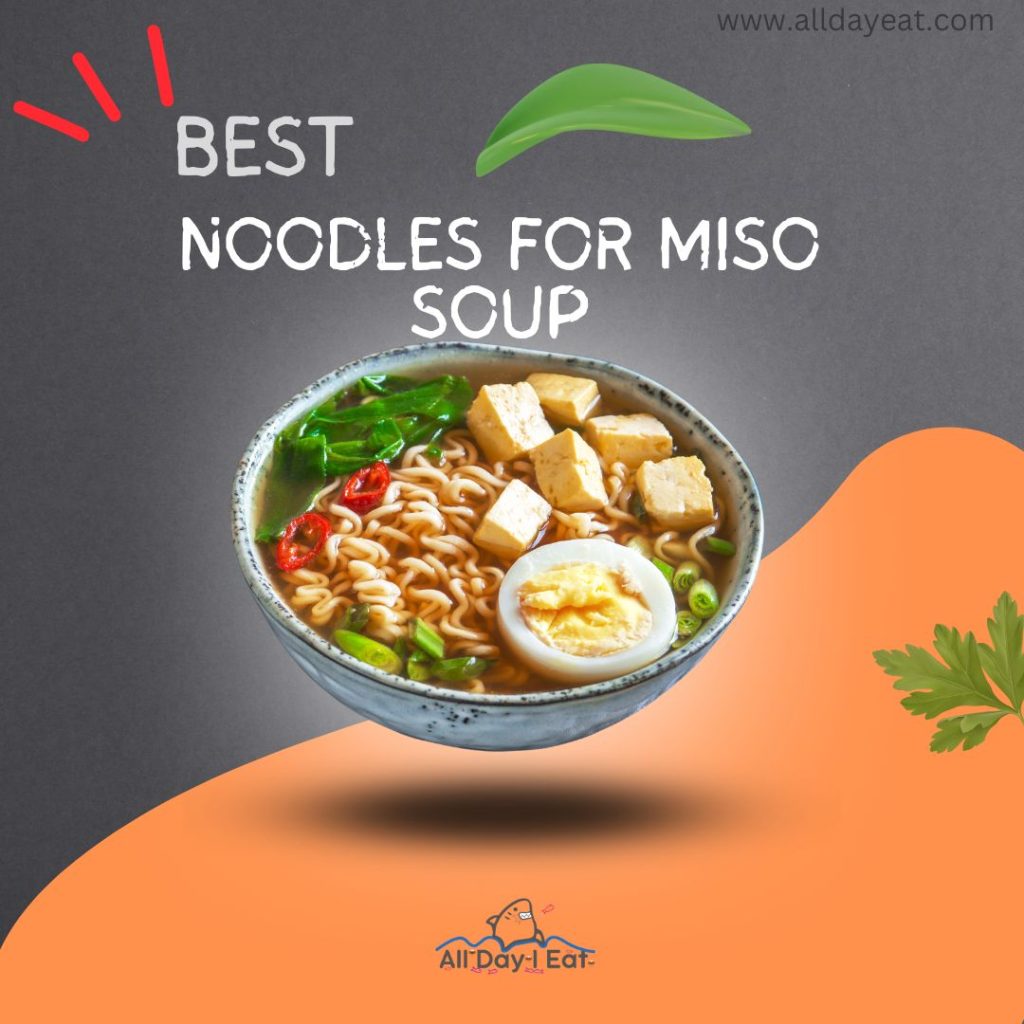










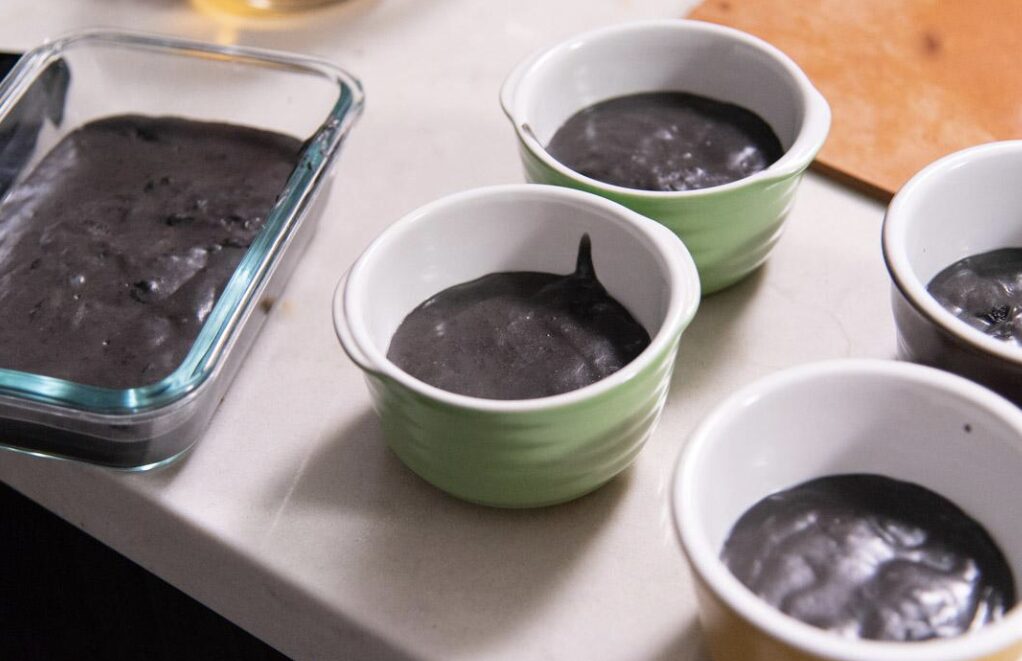
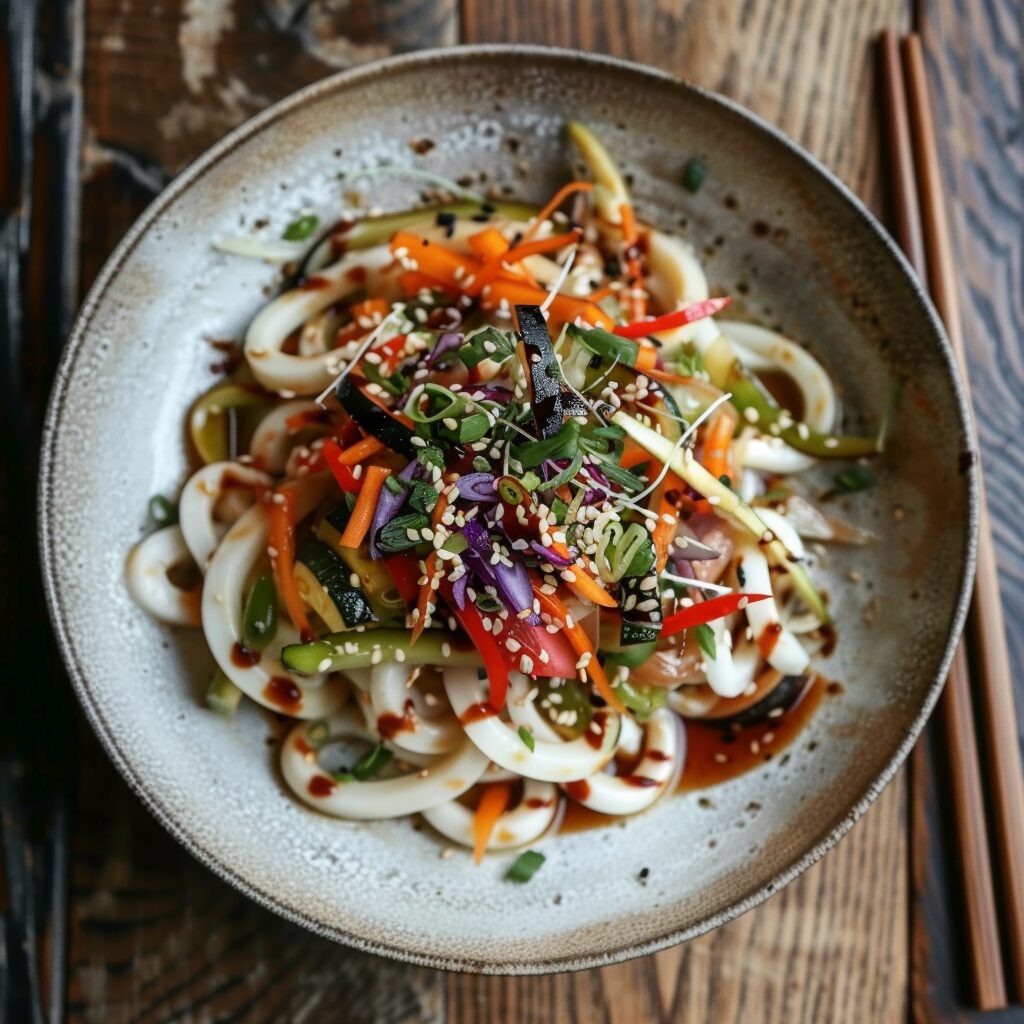

Konnichiwa! (Hello!) I'm Pat Tokuyama, a Japanese tofu cookbook author, who travels for music, food, and adventure. If you like Japanese tea, checkout some of the newestorganic japanese tea, matcha bowls and noren and more!
** Curious about the Plant Based Japanese Cooking Club? ** Learn more here!